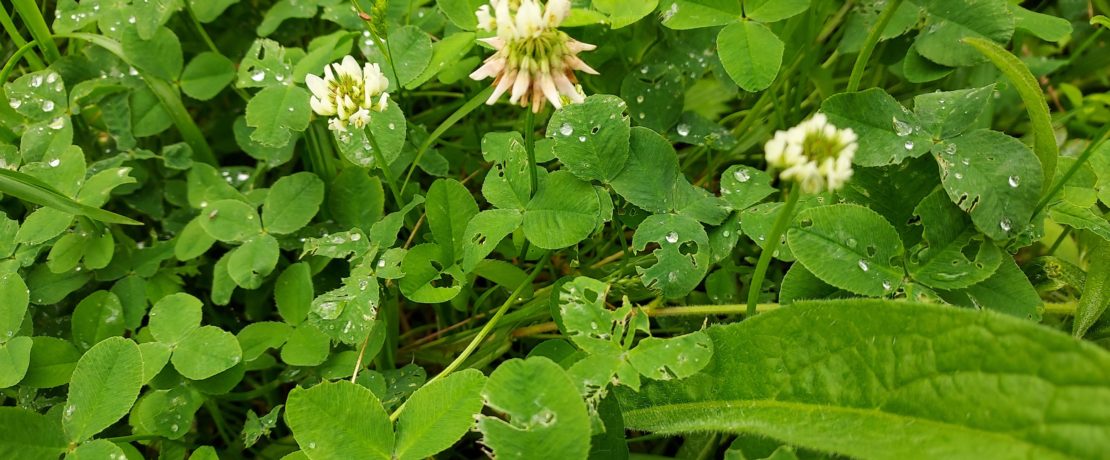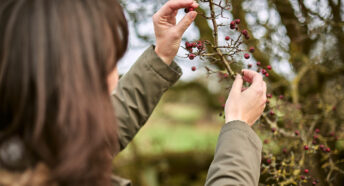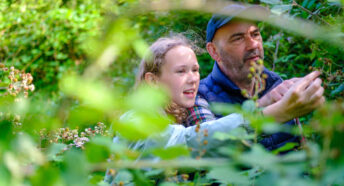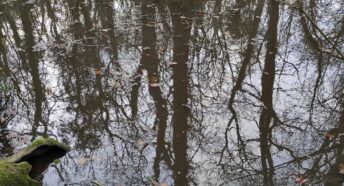In clover
Guest blogger Nicola Scholfield takes a closer look at a remarkable and often overlooked plant – White Clover (Trifolium repens) – and reveals some inspiration she draws from it.
Over the last couple of years, I’ve started to take notice of white clover and admire this plucky little plant. Although it’s been around all my life – I have clear childhood memories of searching for four leaf clovers – I’d never really noticed it properly before.
Resilience
A couple of summers ago, I began to feel sad at the loss of flowers on road verges as they were mowed. I noticed flowering plants that were emerging only to be decimated soon after – cowslip, cuckooflower, ribwort plantain…
But the clover remained. It was able to thrive as a short plant out of reach of the mower’s blades – or when cut, it would recover quickly. Its white-palest pink flowers scattered across verges, grass fields and lawns. Sometimes topped with a bee or other pollinator grateful for its nectar.
In these spots, clover was queen. It’s a resilient plant that bounces back.
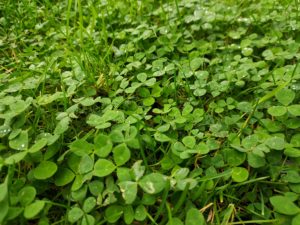
Community
So, when my energetic dog tore bare patches in my lawn, I decided to sow them with white clover seed. Lush islands of clover were soon appearing, which felt lovely under my bare feet – like walking on a duvet.
Looking more closely, I was surprised to notice the clover’s creeping nature – which of course is what the word repens in its name means. This, I think is one of the reasons for its resilience – it can grow horizontally, spreading by runners.
Have you ever picked an individual clover plant? They are so tangled together that it’s difficult to work out where one plant begins and another ends. There’s a sense of community among this plant.
I’m not sure that a single plant would be as resilient on its own.
Generosity
Clover is part of the pea family – the legumes. The pea family is famously nitrogen-fixing – able to ‘fix’ nitrogen from the air and make it available to all life. Nitrogen is an essential building block of life – making up protein in the bodies of all living beings. This is one of only a few natural ways that nitrogen can be made available to life.
Clover does this by forming a symbiotic relationship with bacteria that lives in nodules in its roots – reciprocity between two very different forms of life. The bacteria convert nitrogen into compounds that the clover needs and clover provides the bacteria with energy in return.
This ‘fixed’ nitrogen then becomes available to other plants or animals when the clover dies or is eaten, when it is broken down into nutrients that others can use.
Such an incredible, generous and vital role played by such an unassuming plant.
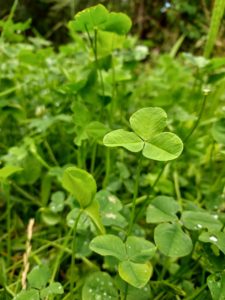
Feeling a connection
As I began to pay attention to clover, I felt drawn by these key qualities – resilience, community and generosity. Qualities that I value and feel meaningful to me, especially over the last couple of years.
When we start to notice what we appreciate about a plant – rather than see it purely from an ecological or horticultural perspective – we open up the chance to connect with it. And to find something that feels meaningful or inspiring. Or perhaps that even speaks to us about ourselves and our lives.
I’ve found much to celebrate in clover, and am grateful for this little, often overlooked plant.
Previous blogs by Nicola
Just a walk in the woods? An introduction to forest bathing
